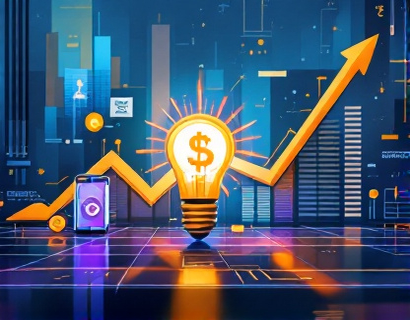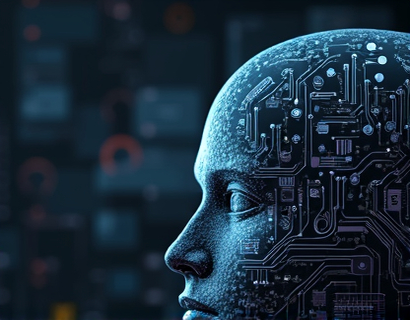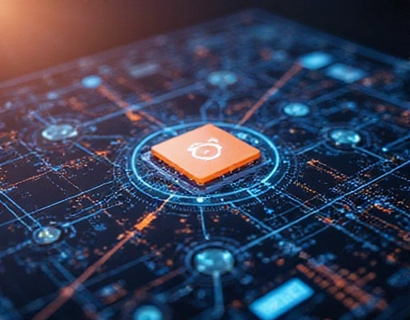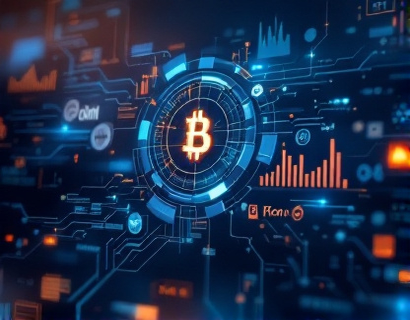Revolutionizing Digital Asset Management: A Deep Dive into Decentralized Cross-Blockchain Conversion
The landscape of blockchain technology is rapidly evolving, presenting both opportunities and challenges for professionals and enthusiasts alike. One of the most significant hurdles in the adoption and utility of digital assets is the complexity surrounding cross-blockchain conversions. Traditional methods often involve cumbersome processes, high transaction fees, and compatibility issues. However, a groundbreaking decentralized application (dApp) is changing the game by streamlining these conversions, ensuring seamless, efficient, and compatible transfers across diverse blockchains. This article delves into the intricacies of this innovative solution, designed specifically for blockchain professionals and digital asset managers seeking cutting-edge solutions.
Understanding the Need for Cross-Blockchain Conversion
The decentralized nature of blockchain technology means that different platforms operate on various protocols, each with its own set of rules and standards. This diversity is a strength, fostering innovation and competition, but it also creates fragmentation. Digital asset owners often find themselves needing to transfer assets between different blockchains, a process that can be fraught with challenges. Traditional methods of cross-blockchain conversion typically involve intermediaries, which can lead to delays, increased costs, and potential security risks. The need for a decentralized, user-friendly solution that simplifies this process is evident.
Introducing the Decentralized Solution
The proposed dApp is a pioneering platform that addresses these challenges head-on. By leveraging the power of decentralized networks, it eliminates the need for intermediaries, reducing transaction costs and enhancing security. This application is built on a robust blockchain infrastructure, ensuring transparency and immutability in all transactions. The core functionality of this dApp revolves around the seamless conversion of digital assets from one blockchain to another, without compromising on compatibility or efficiency.
Key Features of the Decentralized dApp
- Decentralized Architecture: The dApp operates on a decentralized network, removing the single point of failure and enhancing security. This architecture ensures that no single entity controls the conversion process, making it resilient to censorship and manipulation.
- Cross-Chain Compatibility: Designed to work with multiple blockchains, the dApp supports a wide range of digital assets. Whether it's Ethereum, Binance Smart Chain, Polkadot, or any other blockchain, the conversion process is smooth and hassle-free.
- User-Friendly Interface: The dApp features an intuitive and easy-to-navigate interface, making it accessible to both technical and non-technical users. The streamlined process minimizes the learning curve, allowing users to manage their assets efficiently.
- Real-Time Tracking: Users can monitor the conversion process in real-time, receiving updates on transaction statuses and estimated completion times. This transparency builds trust and confidence in the platform.
- Cost-Effective: By eliminating intermediaries, the dApp significantly reduces transaction fees. Users benefit from lower costs, making cross-blockchain transfers more accessible and economical.
Technical Underpinnings of the dApp
The success of this decentralized solution lies in its technical architecture. At its core, the dApp utilizes a combination of smart contracts and cross-chain bridges to facilitate asset conversions. Smart contracts are self-executing contracts with the terms of the agreement directly written into code. These contracts automate the conversion process, ensuring that each step is executed precisely and securely. Cross-chain bridges, on the other hand, enable the transfer of assets between different blockchains, maintaining the integrity and ownership of the digital assets throughout the process.
The dApp employs advanced cryptographic techniques to ensure the security and authenticity of transactions. Each conversion is verified through a consensus mechanism, typically Proof of Stake (PoS) or Proof of Authority (PoA), which adds an extra layer of security and reliability. The use of decentralized storage solutions, such as InterPlanetary File System (IPFS), ensures that asset metadata is stored securely and efficiently, further enhancing the overall performance of the platform.
Benefits for Blockchain Professionals and Digital Asset Managers
For blockchain professionals and digital asset managers, this dApp offers a suite of benefits that can significantly enhance their operations and client services. Here are some of the key advantages:
- Increased Efficiency: The automated and streamlined conversion process saves time and resources, allowing professionals to focus on more strategic tasks.
- Enhanced Security: The decentralized and cryptographic nature of the dApp minimizes the risk of security breaches and fraudulent activities, providing peace of mind for both users and professionals.
- Broader Asset Management: The ability to convert assets across multiple blockchains expands the range of available digital assets, enabling more diverse and robust portfolio management.
- Cost Savings: Lower transaction fees translate to cost savings for clients, making services more competitive and attractive.
- Improved Client Experience: The user-friendly interface and real-time tracking features enhance the overall user experience, leading to higher satisfaction and loyalty.
Case Studies and Real-World Applications
To better understand the practical implications of this decentralized dApp, let's explore a few hypothetical scenarios where it can make a significant impact:
Consider a digital asset manager overseeing a portfolio that includes tokens from Ethereum, Binance Smart Chain, and Solana. Traditionally, managing and converting these assets would involve multiple steps, each with its own set of fees and potential delays. With the dApp, the manager can initiate a single conversion request, and the system will automatically handle the necessary transfers across all specified blockchains. This not only simplifies the process but also ensures that the manager can provide faster and more reliable services to clients.
Another scenario involves a decentralized finance (DeFi) developer who needs to test smart contracts on different blockchains. The dApp allows for seamless asset transfers between test networks, reducing the complexity and cost associated with traditional methods. This capability accelerates the development and deployment of new DeFi protocols, fostering innovation in the space.
Future Prospects and Scalability
The potential for this decentralized dApp extends far beyond current applications. As the blockchain ecosystem continues to grow, the demand for efficient cross-blockchain solutions will only increase. Here are some future prospects and scalability considerations:
Firstly, the dApp can integrate with emerging blockchain technologies and protocols, ensuring compatibility with future developments. This adaptability will keep the platform relevant and valuable in the long term. Secondly, the platform can expand its support to include more blockchains and asset types, further enhancing its utility. Additionally, the dApp can explore partnerships with other decentralized services, creating a comprehensive ecosystem for digital asset management.
Scalability is another critical aspect. As the number of users and transactions grows, the dApp must be able to handle increased load without compromising performance. Implementing sharding techniques and optimizing smart contract execution can help achieve this goal. Furthermore, the use of layer 2 solutions can offload some of the processing, ensuring smooth and fast operations even during peak times.
Conclusion
The introduction of a decentralized dApp for cross-blockchain conversion of digital assets represents a significant leap forward in blockchain technology. By addressing the complexities and challenges of traditional conversion methods, this platform offers a seamless, efficient, and secure solution for blockchain professionals and digital asset managers. The benefits of increased efficiency, enhanced security, and cost savings make it an invaluable tool in the ever-evolving landscape of digital assets. As the technology matures and adopts broader applications, the future of decentralized digital asset management looks promising and exciting.











































